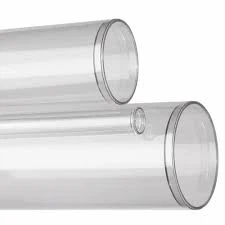Nov . 06, 2024 23:22 Back to list
triangle pp welding rod
Understanding Triangle PP Welding Rods
Welding is an essential process in various industries, playing a critical role in manufacturing, construction, and automotive applications. Among the myriad tools and materials available for welding, triangle PP welding rods have garnered attention for their unique composition and performance capabilities. This article delves into the characteristics, applications, and advantages of triangle PP welding rods.
What are Triangle PP Welding Rods?
Triangle PP welding rods are specialized rods designed for use in plastic welding. Typically made from polypropylene (PP), these rods are well-suited for joining plastic components through a variety of welding techniques such as extrusion welding and hot air welding. The triangle in their name refers to their cross-sectional shape, which is designed to enhance the melting and flow characteristics during the welding process. This particular design allows for increased surface area when heated, ensuring a more efficient melding of the base materials.
Characteristics of Triangle PP Welding Rods
One of the primary advantages of triangle PP welding rods is their excellent thermal stability. Polypropylene has a relatively high melting point, adding durability and strength to the welds produced. Additionally, triangle PP rods display low thermal conductivity, which helps minimize heat loss during the welding operation.
Moreover, these rods offer good flexibility and resistance to chemical corrosion. This makes them particularly effective in environments where exposure to harsh chemicals is inevitable. The mechanical properties of polypropylene also allow for a degree of flexibility in the welded joint, reducing the likelihood of cracking under stress.
Applications
triangle pp welding rod

Triangle PP welding rods are predominantly used in industries that deal with plastic fabrication, such as the automotive, aerospace, and packaging sectors. Common applications include welding components for tanks, pipes, and other structural elements that require a strong bond to withstand various operational conditions.
In the automotive industry, for instance, triangle PP welding rods are used to fabricate components that need to be lightweight yet robust. They are also employed in creating custom parts that require specific shapes and sizes, making them versatile for various project requirements.
Advantages
A key advantage of triangle PP welding rods is their ease of use. The triangular shape facilitates better penetration and melting, leading to more efficient welding compared to traditional cylindrical rods. Welders often find that these rods provide a smoother finish and more consistent results.
Cost-effectiveness is another significant benefit. Given that polypropylene is relatively inexpensive compared to other welding materials, triangle PP welding rods can provide economic efficiency without sacrificing quality.
Moreover, the environmental impact of using polypropylene should not be overlooked. As the world progressively moves towards sustainable practices, using welding rods made from recyclable materials can contribute positively to reducing overall waste.
Conclusion
In conclusion, triangle PP welding rods are an innovative tool for plastic welding, combining excellent thermal properties, versatility, and cost-effectiveness. Their unique triangular shape enhances the welding process, making them a preferred choice for many industries. As the demand for efficient and sustainable welding solutions grows, triangle PP welding rods are likely to play an increasingly vital role in modern manufacturing and fabrication processes. Whether used in automotive, aerospace, or any other sector requiring high-quality plastic welding, these rods demonstrate an impressive balance of performance and environmental consciousness.
-
High-Quality PPR Pipes and Fittings Durable ERA PPR & PVC PPR Solutions
NewsJul.08,2025
-
Black HDPE Cutting Board - Durable, Non-Porous & Food Safe HDPE Plastic Cutting Board
NewsJul.08,2025
-
High-Quality CPVC Panel Durable HDPE & PVC Panels Supplier
NewsJul.08,2025
-
Double PE Welding Rod Supplier - High Strength, Durable & Versatile Welding Solutions
NewsJul.07,2025
-
High-Quality PVC-O Pipe Supplier Durable 75mm PVC Pipe & Connections Leading PVC Pipe Company
NewsJul.07,2025
-
HDPE Drainage Pipe Supplier – Durable & Corrosion-Resistant Solutions
NewsJul.06,2025

